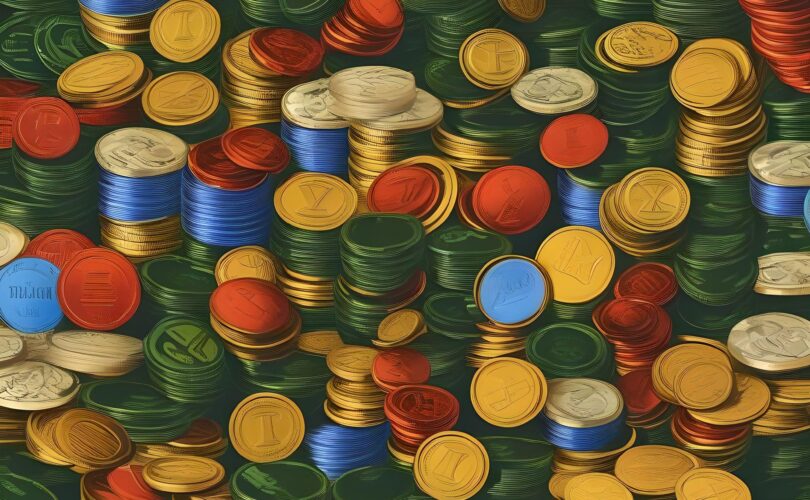Unpacking the Receipt: Demystifying Excise Tax vs. Sales Tax
Ever wondered why some items on your receipt have an extra tax compared to others? The culprits might be excise taxes or sales taxes. But what exactly sets them apart? This guide dives into the world of taxation, explaining how excise taxes differ from sales taxes and how they impact what you pay at the checkout counter.
Table of Contents
- Tax Time Breakdown: Understanding Sales Tax
- The Selective Taxman: Unveiling Excise Taxes
- Spot the Difference: Key Distinctions Between Excise and Sales Tax
- Beyond the Receipt: The Impact of Each Tax
- Taxing Times: Examples of Excise and Sales Taxes
Tax Time Breakdown: Understanding Sales Tax
Sales tax is a tax levied on the retail price of most goods and services you purchase. It’s typically a percentage added to the base price of an item at the checkout register. The specific sales tax rate can vary depending on your location. Some states have a flat sales tax rate applied across all taxable goods, while others have localities with additional sales taxes on top of the state rate.
Essentially, sales tax is a broad tax that applies to a wide range of purchases.
The Selective Taxman: Unveiling Excise Taxes
Excise taxes, on the other hand, are specific taxes levied on certain goods or services, not on everything you buy. Think of them as selective taxes targeting particular categories like:
- Tobacco products: Cigarettes, chewing tobacco, and other tobacco products are often subject to excise taxes.
- Alcohol: Beer, wine, and spirits typically have excise taxes added to their base price.
- Fuel: Gasoline and other motor fuels usually have federal and state excise taxes included in the pump price.
- Luxury goods: Some states or localities might impose excise taxes on high-value items like jewelry or cars.
Excise taxes are often implemented to discourage consumption of certain goods or to generate revenue for specific purposes.
Spot the Difference: Key Distinctions Between Excise and Sales Tax
Here’s a quick breakdown of the key differences between excise and sales tax:
- Target: Sales tax applies broadly to most purchases, while excise taxes target specific goods or services.
- Rate: Sales tax is usually a percentage of the total purchase price, while excise taxes can be a flat fee per unit (e.g., per gallon of gasoline) or a percentage of the wholesale price.
- Transparency: Sales tax is usually added at the register, while excise taxes might be included in the price you see on the shelf.
Remember: Tax laws can vary by location. It’s always a good idea to consult your state or local tax authority for the most up-to-date information.
Beyond the Receipt: The Impact of Each Tax
Both excise and sales taxes have an impact on consumer behavior and government revenue:
- Sales Tax: Can encourage people to shop around for better deals on taxable items, impacting business pricing strategies. Sales tax revenue is a significant source of income for state and local governments, funding public services and infrastructure.
- Excise Tax: Can discourage consumption of goods deemed harmful (like cigarettes) or generate revenue for specific uses (like gas tax funding road improvements).
Taxing Times: Examples of Excise and Sales Tax
Let’s see these taxes in action:
- Sales Tax Example: You buy a new jacket for $50. In a state with a 7% sales tax, you’ll pay an additional $3.50 in sales tax, bringing your total to $53.50.
- Excise Tax Example: You fill up your car’s gas tank with 15 gallons. If the state excise tax on gasoline is $.20 per gallon and the federal excise tax is $.18 per gallon, you’ll pay an additional $.57 in excise taxes on top of the base price of gas.
By understanding the difference between excise and sales taxes, you can become a more informed consumer and navigate your shopping experience with greater awareness of how taxes impact the final price you pay.
Tips & Tricks for This Content Model: Real-Life Examples & Interactive Elements
This content model can be enhanced by incorporating real-life examples and interactive elements to make the tax topic more engaging. Here are some ways to achieve this:
- Real-Life Examples: Showcase relatable scenarios where excise and sales tax come into play (e.g., comparing receipts from grocery shopping vs. buying gasoline).
- Interactive Elements: Consider including a tax calculator tool that allows users to estimate the total cost of an item after factoring in sales and excise taxes (based on their location and entered purchase price).
Here’s an example of how you can incorporate these tips in the “Taxing Times: Examples of Excise and Sales Taxes” section:
Taxing Times: Examples of Excise and Sales Tax
Let’s take a trip to the grocery store. You grab a gallon of milk, a box of cereal, and a pack of cigarettes. Here’s how excise and sales tax might apply:
- Milk & Cereal: These are typically taxed at your state’s normal sales tax rate. Let’s say it’s 7%. So, if the milk costs $2.50 and the cereal costs $4.00, you’d pay roughly $.18 in sales tax on the milk and $.28 on the cereal.
- Cigarettes: These are often subject to both excise taxes and sales taxes. The exact rates can vary by state, but for example, if there’s a $1.50 per pack excise tax and a 20% sales tax on top of that, a $10 pack of cigarettes could end up costing an additional $3.00 in taxes!
Want to see how sales and excise taxes impact your next purchase? Try our interactive tax calculator tool (link to interactive calculator)! Simply enter the price of your item, your location (zip code), and the calculator will estimate the total amount of sales and excise taxes you’ll pay.
By incorporating these elements, you can create a more interactive and engaging learning experience for your readers. They’ll gain a practical understanding of how these taxes impact their everyday purchases.
FAQ’S
Q: Are there any items exempt from sales tax?
A: Yes, some items might be exempt from sales tax depending on your location. Common exemptions include groceries, prescription medication, and certain clothing items. Always check with your state or local tax authority for a comprehensive list of exempt items.
Q: How can I stay informed about changes in sales and excise taxes?
A: Several resources can help you stay up-to-date. Your state or local tax authority website will have the latest information on tax rates and regulations. Financial news websites and personal finance blogs can also provide helpful updates and insights.
Q: Who benefits from excise taxes?
A: The revenue generated from excise taxes often goes towards specific purposes. For instance, gas tax revenue might be used to fund road construction and maintenance projects. Excise taxes on tobacco products can be directed towards public health initiatives.
Q: Are there any criticisms of excise taxes?
A: Critics argue that excise taxes can disproportionately burden low-income earners who spend a larger portion of their income on goods like cigarettes or gasoline that are subject to these taxes. Additionally, some argue that excise taxes can stifle economic activity in certain industries.
Q: Do I need to pay excise tax when I buy something online?
A: It depends. In some cases, online retailers are required to collect and remit sales tax based on your location. Excise taxes might also be included in the price you pay for certain goods purchased online. It’s always best to check the retailer’s tax policy before making an online purchase.




